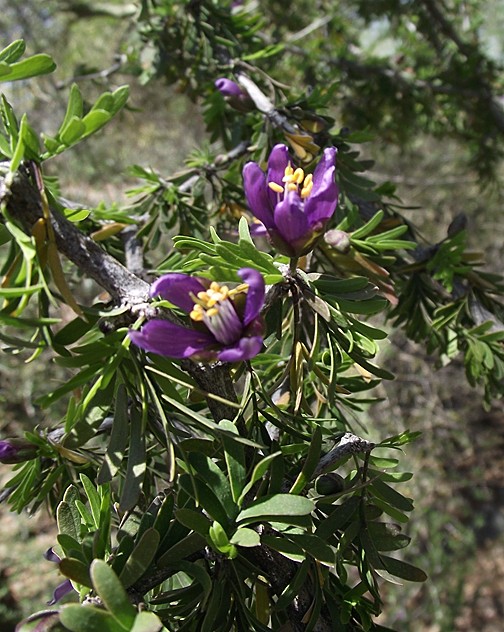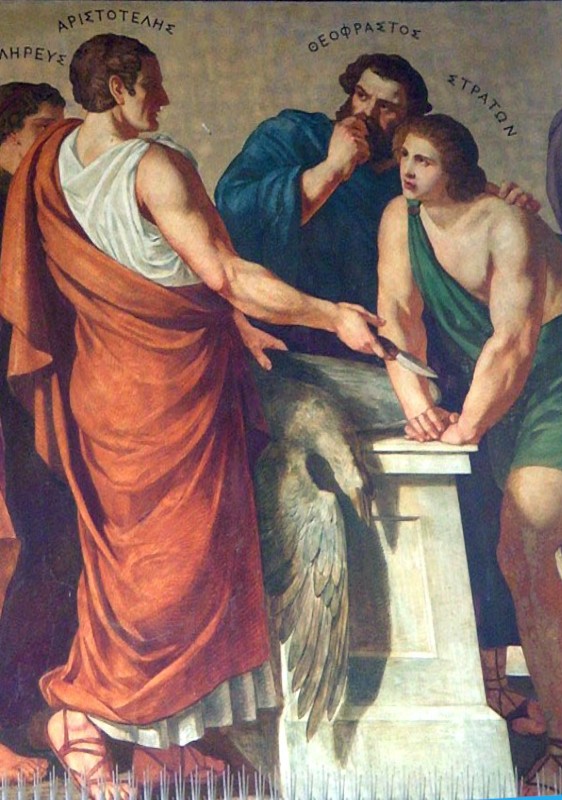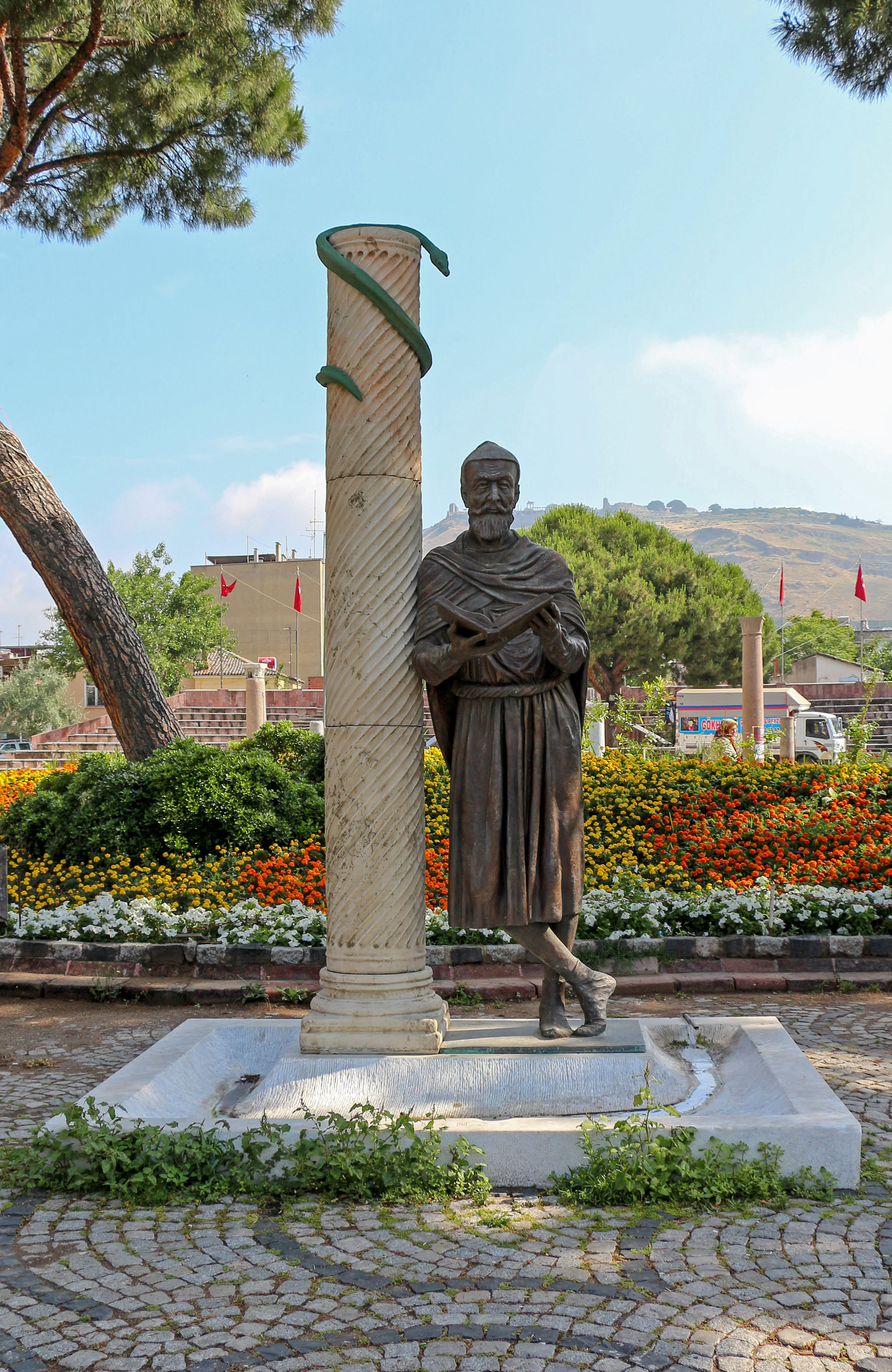|
Andrés Laguna
Andrés Laguna de Segovia (1499–1559) was a Spanish humanist physician, pharmacologist, and botanist. Biography Laguna was born in Segovia, according to Diego de Colmenares and other historians, to a converted Jewish doctor. He studied the arts for two years in Salamanca, then moved to Paris in 1530, where he graduated from the arts and went on to study medicine. He also learned classical languages such as Greek and Latin with such fluency as to be able to read Dioscorides in his original language. He was also influenced by Erasmus. Laguna returned to Spain in 1536, then travelled to England, lived some years in the Netherlands and collected herbal remedies in all the places he stayed to verify Dioscorides' prescriptions. Between 1540 and 1545 he resided in Metz, becoming a doctor of the city, and from 1545 to 1554 he stayed in Italy, where he received a doctorate from the University of Bologne and was honored by the Popes Paul III and Julius III, becoming doctor to the latter ... [...More Info...] [...Related Items...] OR: [Wikipedia] [Google] [Baidu] |
Segovia
Segovia ( , , ) is a city in the autonomous communities of Spain, autonomous community of Castile and León, Spain. It is the capital and most populated municipality of the Province of Segovia. Segovia is located in the Meseta central, Inner Plateau of the Iberian Peninsula, near the northern slopes of the Sistema Central mountain range. Housing is nestled on a bend of the Eresma River, Eresma river. The city is famous for its historic buildings including three main landmarks: Aqueduct of Segovia, its midtown Roman aqueduct, Segovia Cathedral, its cathedral (one of the last ones to be built in Europe following a Gothic style), and the Alcázar of Segovia (a fortress). The city center was declared a World Heritage Site by UNESCO in 1985. Etymology The name of Segovia is of Celtiberians, Celtiberian origin. Although historians have linked its old name to ', the discovery of the original Ancient Rome, Roman city of Segobriga near Saelices discarded this possibility. The name of "S ... [...More Info...] [...Related Items...] OR: [Wikipedia] [Google] [Baidu] |
Real Jardín Botánico De Madrid
Real Jardín Botánico de Madrid (Spanish language, Spanish for "Royal Botanical Garden of Madrid") is an botanical garden in Madrid (Spain). The public entrance is located at Plaza de Murillo, next to the Museo del Prado, Prado Museum. History The garden was founded on October 17, 1755, by King Ferdinand VI of Spain, Ferdinand VI, and installed in the Orchard of Migas Calientes, near what today is called Puerta de Hierro, on the banks of the Manzanares River. It contained more than 2,000 plants collected by José Quer y Martínez, botanist and surgeon. In 1774 King Charles III of Spain, Charles III ordered the garden moved to its current location on the Paseo del Prado. This new site opened in 1781. Inside an area defined by wrought iron fencing, the design by architects Francesco Sabatini and Juan de Villanueva organized the garden into three tiered terraces, arranging plants according to the method of Linnaeus. Its mission was not only to exhibit plants, but also to teach ... [...More Info...] [...Related Items...] OR: [Wikipedia] [Google] [Baidu] |
Laguna - Epitomes Omnium Galeni Pergameni Operum, 1553 - 3049278
Laguna (Italian and Spanish word for lagoon), is a Spanish, Italian, and Polish surname. It may also refer to: People * Andrés Laguna (1499–1559), Spanish physician, pharmacologist, and botanist * Benjamín Máximo Laguna y Villanueva (1822–1902), Spanish forester, entomologist and botanist of Spanish and Philippine flora * Theodore de Laguna (1876–1930), American philosopher, taught at Bryn Mawr College and in the Philippines, early feminist. * Aleksander Łaguna (7/10/1894 – 9/10/1934) – Major pilot of the Polish Army, knight of the Virtuti Militari * Mikołaj Łaguna (14/06/1890–1940) – Polish lieutenant, murdered in Katyn * Piotr Łaguna (1905–1941), major of the Polish Army, pilot * Stosław (Klemens Stanisław) Łaguna, (23/02/1833-28/04/1900), professor of Polish Law at the University of Saint Petersburg, January Uprising participant * Stanisław Ignacy Łaguna (18 January 1878-1 August 1943) – Polish engineer, councilor of the Lviv City Council ... [...More Info...] [...Related Items...] OR: [Wikipedia] [Google] [Baidu] |
Gonzalo Fernández De Oviedo Y Valdés
Gonzalo Fernández de Oviedo y Valdés (August 1478 – 1557), commonly known as Oviedo, was a Spanish soldier, historian, writer, botanist and colonist. Oviedo participated in the Spanish colonization of the West Indies, arriving in the first few years after Christopher Columbus became the first European to arrive at the islands in 1492. Oviedo's chronicle ''Historia general de las Indias'', published in 1535 to expand on his 1526 summary ''La Natural hystoria de las Indias'' (collectively reprinted, three centuries after his death, as ''Historia general y natural de las Indias''), forms one of the few primary sources about it. Portions of the original text were widely read in the 16th century in Spanish, English, Italian and French editions, and introduced Europeans to the hammock, the pineapple, and tobacco as well as creating influential representations of the colonized peoples of the region. Early life Oviedo was born in Madrid of an Asturian lineage and educated in the cou ... [...More Info...] [...Related Items...] OR: [Wikipedia] [Google] [Baidu] |
Guaiacum
''Guaiacum'' (''OED'' 2nd edition, 1989.Entry "guaiacum" in Merriam-Webster Online Dictionary ', retrieved 2013-04-30.), sometimes spelled ''Guajacum'', is a of s in the family |
Alchemy
Alchemy (from the Arabic word , ) is an ancient branch of natural philosophy, a philosophical and protoscientific tradition that was historically practised in China, India, the Muslim world, and Europe. In its Western form, alchemy is first attested in a number of pseudepigraphical texts written in Greco-Roman Egypt during the first few centuries AD.. Greek-speaking alchemists often referred to their craft as "the Art" (τέχνη) or "Knowledge" (ἐπιστήμη), and it was often characterised as mystic (μυστική), sacred (ἱɛρά), or divine (θɛíα). Alchemists attempted to purify, mature, and perfect certain materials. Common aims were chrysopoeia, the transmutation of " base metals" (e.g., lead) into "noble metals" (particularly gold); the creation of an elixir of immortality; and the creation of panaceas able to cure any disease. The perfection of the human body and soul was thought to result from the alchemical ''magnum opus'' ("Great Work"). The ... [...More Info...] [...Related Items...] OR: [Wikipedia] [Google] [Baidu] |
Theophrastus
Theophrastus (; ; c. 371 – c. 287 BC) was an ancient Greek Philosophy, philosopher and Natural history, naturalist. A native of Eresos in Lesbos, he was Aristotle's close colleague and successor as head of the Lyceum (classical), Lyceum, the Peripatetic school, Peripatetic school of philosophy in Athens. Theophrastus wrote numerous treatises across all areas of philosophy, working to support, improve, expand, and develop Aristotelian system, the Aristotelian system. He made significant contributions to various fields, including ethics, metaphysics, botany, and natural history. Often considered the "father of botany" for his groundbreaking works "Historia Plantarum (Theophrastus), Enquiry into Plants" () and "On the Causes of Plants", () Theophrastus established the foundations of Botany, botanical science. His given name was (Ancient Greek: ); the nickname Theophrastus ("divine speaker") was reputedly given to him by Aristotle in recognition of his eloquent style. He came to ... [...More Info...] [...Related Items...] OR: [Wikipedia] [Google] [Baidu] |
Galen
Aelius Galenus or Claudius Galenus (; September 129 – AD), often Anglicization, anglicized as Galen () or Galen of Pergamon, was a Ancient Rome, Roman and Greeks, Greek physician, surgeon, and Philosophy, philosopher. Considered to be one of the most accomplished of all medical researchers of Ancient history, antiquity, Galen influenced the development of various scientific disciplines, including anatomy, physiology, pathology, pharmacology, and neurology, as well as philosophy and logic. The son of Aelius Nicon, a wealthy Greek architect with scholarly interests, Galen received a comprehensive education that prepared him for a successful career as a physician and philosopher. Born in the ancient city of Pergamon (present-day Bergama, Turkey), Galen traveled extensively, exposing himself to a wide variety of medical theories and discoveries before settling in Ancient Rome, Rome, where he served prominent members of Roman society and eventually was given the position of perso ... [...More Info...] [...Related Items...] OR: [Wikipedia] [Google] [Baidu] |
Antwerp
Antwerp (; ; ) is a City status in Belgium, city and a Municipalities of Belgium, municipality in the Flemish Region of Belgium. It is the capital and largest city of Antwerp Province, and the third-largest city in Belgium by area at , after Tournai and Couvin. With a population of 565,039, it is the List of most populous municipalities in Belgium, most populous municipality in Belgium, and with a metropolitan population of over 1.2 million people, the country's Metropolitan areas in Belgium, second-largest metropolitan area after Brussels. Definitions of metropolitan areas in Belgium. Flowing through Antwerp is the river Scheldt. Antwerp is linked to the North Sea by the river's Western Scheldt, Westerschelde estuary. It is about north of Brussels, and about south of the Netherlands, Dutch border. The Port of Antwerp is one of the biggest in the world, ranking second in Europe after Rotterdam and List of world's busiest container ports, within the top 20 globally. The city ... [...More Info...] [...Related Items...] OR: [Wikipedia] [Google] [Baidu] |
Botanical
Botany, also called plant science, is the branch of natural science and biology studying plants, especially Plant anatomy, their anatomy, Plant taxonomy, taxonomy, and Plant ecology, ecology. A botanist or plant scientist is a scientist who specialises in this field. "Plant" and "botany" may be defined more narrowly to include only land plants and their study, which is also known as phytology. Phytologists or botanists (in the strict sense) study approximately 410,000 species of Embryophyte, land plants, including some 391,000 species of vascular plants (of which approximately 369,000 are flowering plants) and approximately 20,000 bryophytes. Botany originated as history of herbalism#Prehistory, prehistoric herbalism to identify and later cultivate plants that were edible, poisonous, and medicinal, making it one of the first endeavours of human investigation. Medieval physic gardens, often attached to Monastery, monasteries, contained plants possibly having medicinal benefit. ... [...More Info...] [...Related Items...] OR: [Wikipedia] [Google] [Baidu] |
Printing
Printing is a process for mass reproducing text and images using a master form or template. The earliest non-paper products involving printing include cylinder seals and objects such as the Cyrus Cylinder and the Cylinders of Nabonidus. The earliest known form of printing as applied to paper was woodblock printing, which appeared in China before 220 AD for cloth printing. However, it would not be applied to paper until the seventh century.Shelagh Vainker in Anne Farrer (ed), "Caves of the Thousand Buddhas", 1990, British Museum publications, Later developments in printing technology include the movable type invented by Bi Sheng around 1040 AD and the printing press invented by Johannes Gutenberg in the 15th century. The technology of printing played a key role in the development of the Renaissance and the Scientific Revolution and laid the material basis for the modern knowledge-based economy and the spread of learning to the masses. History Woodblock printing Woodblo ... [...More Info...] [...Related Items...] OR: [Wikipedia] [Google] [Baidu] |
Antonio De Nebrija
Antonio de Nebrija (14445 July 1522) was the most influential Spanish humanist of his era. He wrote poetry, commented on literary works, and encouraged the study of classical languages and literature, but his most important contributions were in the fields of grammar and lexicography. Nebrija was the author of the Spanish Grammar (''Gramática de la lengua castellana'', 1492) and the first dictionary of the Spanish language (1495). His grammar is the first published grammar study of any modern European language. His chief works were published and republished many times during and after his life and his scholarship had a great influence for more than a century, both in Spain and in the expanding Spanish Empire.Perona 2004Hamann 2015 Name Nebrija was baptized . In typical Renaissance humanist fashion, he Latinized his name as (or in Spanish) by taking '' Aelius'' from the Roman inscriptions of his native Lebrija, known in Roman times as . He was also known as , , and . Biogra ... [...More Info...] [...Related Items...] OR: [Wikipedia] [Google] [Baidu] |








